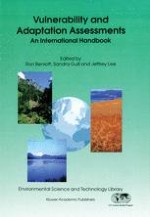1996 | Buch
Vulnerability and Adaptation Assessments
An International Handbook
herausgegeben von: Ron Benioff, Sandra Guill, Jeffrey Lee
Verlag: Springer Netherlands
Buchreihe : Environmental Science and Technology Library
Enthalten in: Professional Book Archive
